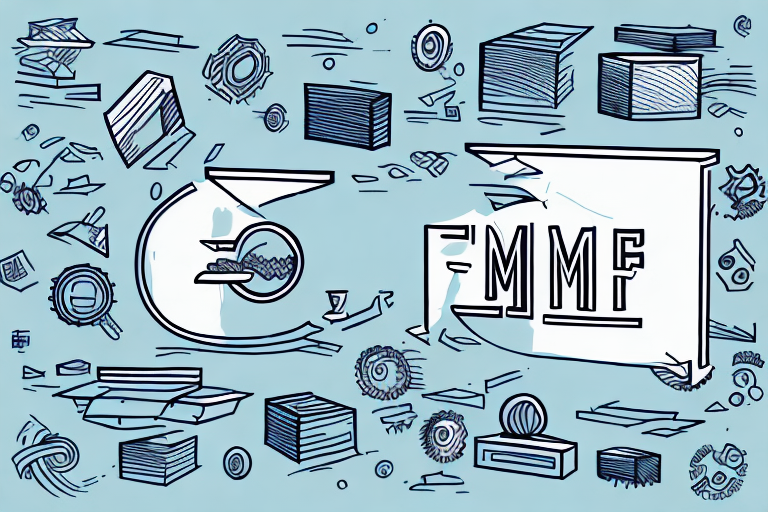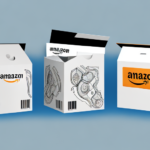What Is the Difference Between FBA and FBM?
Are you an online seller wondering which fulfillment option is best for your business needs? Look no further than Amazon’s Fulfillment by Amazon (FBA) and Fulfillment by Merchant (FBM). Both offer advantages and disadvantages, so it’s crucial to understand the basics. This article provides an in-depth analysis to help you make the best decision for your e-commerce business.
Understanding FBA and FBM: The Basics
Amazon’s FBA and FBM are two distinct fulfillment services available to sellers:
- FBA (Fulfillment by Amazon): Amazon stores, packs, ships your products, and handles returns and customer inquiries.
- FBM (Fulfillment by Merchant): Sellers store, pack, and ship orders themselves, managing all aspects of the fulfillment process.
Advantages of FBA
- Amazon Prime Eligibility: Products are eligible for Amazon Prime, offering free two-day shipping to Prime members, which can boost sales and customer satisfaction.
- Logistical Support: Amazon handles storage, shipping, and returns, saving sellers time and potentially reducing shipping costs through Amazon’s negotiated rates.
Advantages of FBM
- Control Over Fulfillment: Sellers have complete control over inventory management, packaging, and shipping processes.
- Cost-Effective for Certain Products: Ideal for unique or fragile items requiring special handling, or for businesses with smaller inventories and lower profit margins.
- Personalized Customer Experience: Ability to include personalized notes or packaging materials to enhance brand loyalty.
Pros and Cons of FBA and FBM
FBA: Pros and Cons
Pros:
- Streamlined operations with Amazon handling logistics.
- Improved visibility and likelihood of winning the Buy Box.
- Access to Amazon’s customer service and return handling.
Cons:
- Higher fees compared to FBM, including storage and fulfillment fees.
- Less control over inventory, potentially leading to additional fees for lost or damaged items.
FBM: Pros and Cons
Pros:
- Greater control over inventory and shipping processes.
- Lower fees, allowing for higher profit margins on sales.
- Ability to manage personalized packaging and branding.
Cons:
- Requires more time and resources to handle fulfillment.
- Potentially slower shipping times, which can impact customer satisfaction.
Cost Analysis: Hidden Costs of FBA vs FBM
FBA Costs
FBA fees include:
- Referral Fees: Based on product category, typically ranging from 6-45% of the sale price.
- Fulfillment Fees: Charged per unit for storage, packing, and shipping.
- Additional Fees: Long-term storage, removal, and disposal fees for unsold inventory.
FBM Costs
FBM involves:
- Shipping and Handling: Costs for packaging materials, shipping fees, and labor for order processing.
- Storage Expenses: Costs associated with storing inventory, whether at home or in a warehouse.
- Return Management: Handling returns and potential restocking fees.
While FBM typically has lower upfront fees, sellers must account for these hidden costs to accurately assess profitability.
Choosing the Best Fulfillment Option for Your Business
Selecting between FBA and FBM depends on various factors:
- Product Niche: Unique or fragile products may benefit from FBM’s personalized handling.
- Sales Volume: High-volume sellers might leverage FBA’s streamlined logistics to scale efficiently.
- Profit Margins: Products with slimmer margins might be more suitable for FBM to minimize fees.
- Customer Service Preferences: FBA offers Amazon-managed customer service, while FBM allows for direct interaction with customers.
Consider a hybrid approach, utilizing both FBA and FBM to capitalize on the strengths of each method.
Maximizing Profit with Amazon's Fulfillment Services
To optimize profitability:
Leverage Amazon’s Promotional Tools
- Utilize Lightning Deals, coupons, and sponsored products to increase visibility and sales.
Optimize Your Pricing Strategy
Regularly analyze and adjust pricing to remain competitive while maintaining healthy profit margins. Tools like Amazon’s pricing APIs can help automate this process.
Enhance Inventory Management
Efficient inventory management reduces storage fees and prevents stockouts or overstock situations. Consider using inventory management software or integrating with Amazon’s inventory tools.
The Impact of Customer Experience on Fulfillment Choice
Customer satisfaction is paramount:
- FBA: Offers faster shipping options like Prime, enhancing the customer experience.
- FBM: Allows for personalized customer interactions, which can build brand loyalty.
Assess what your customers value more and choose the fulfillment method that aligns with their expectations.
A Step-by-Step Guide to Setting Up Your Amazon Store with FBA or FBM
Setting Up FBA
- Create an Amazon Seller Central account.
- List your products and select FBA as the fulfillment method.
- Send your inventory to Amazon’s fulfillment centers.
- Manage your inventory and monitor sales through Seller Central.
Setting Up FBM
- Create an Amazon Seller Central account.
- List your products and select FBM as the fulfillment method.
- Set up your own storage and shipping processes.
- Handle customer service and returns independently.
Refer to Amazon’s comprehensive guides for detailed instructions on setting up both fulfillment methods.
Top Tips for Successful Selling with FBA or FBM
- Optimize Product Listings: Use high-quality images, effective keywords, and detailed descriptions to improve visibility and conversion rates.
- Monitor Inventory Levels: Prevent stockouts or excess inventory by regularly tracking your stock and sales trends.
- Collect and Utilize Customer Feedback: Encourage reviews and use feedback to improve your products and services.
- Stay Informed: Keep up with Amazon’s policies and industry trends to adapt your strategies accordingly.
Navigating the Challenges of FBA and FBM
Challenges with FBA
- Managing storage fees and avoiding long-term storage penalties.
- Ensuring inventory accuracy to prevent stock discrepancies.
Challenges with FBM
- Handling the logistics of shipping and returns efficiently.
- Maintaining high customer service standards independently.
Implementing effective strategies and leveraging tools can help mitigate these challenges and ensure smooth operations.
The Future of E-commerce Fulfillment: FBA vs FBM
As e-commerce continues to evolve, both FBA and FBM will adapt to meet changing market demands:
- FBA: Likely to expand with increased automation and enhanced logistics capabilities, maintaining its dominance for large-scale sellers.
- FBM: Will remain attractive for small-scale sellers and niche markets that require personalized fulfillment solutions.
Staying adaptable and informed about industry trends will help sellers make the best fulfillment choices for their businesses.
In conclusion, choosing between FBA and FBM significantly impacts the profitability and success of your e-commerce business. Carefully evaluate the benefits and limitations of each option, consider your specific business needs and goals, and implement strategies that maximize your strengths. By understanding the nuances of FBA and FBM, you can make informed decisions that drive growth and enhance the customer experience.




















